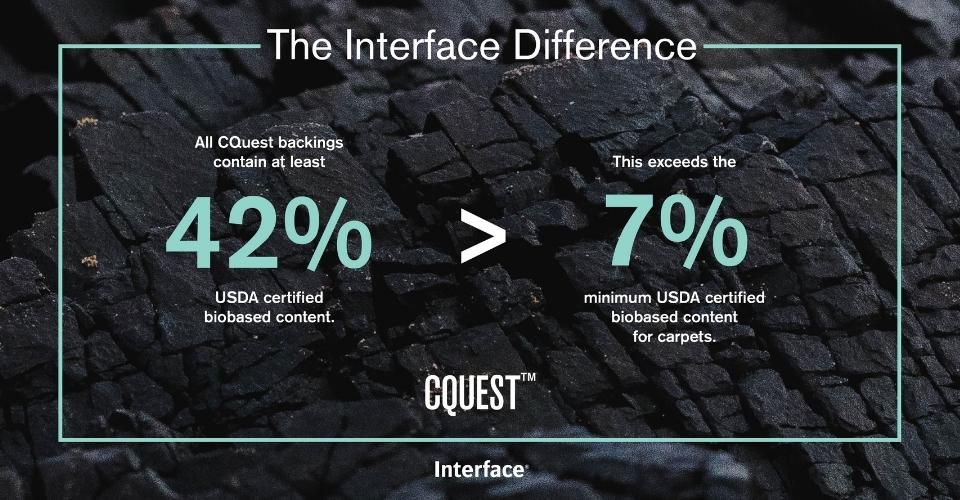A term experiencing a resurgence in sustainability circles is “bio-based.” And it’s generating excitement for a good reason – bio-based products and materials have the potential to help us reverse global warming.
The EPA defines bio-based materials as “products that mainly consist of a substance (or substances) derived from living matter and either occur naturally or are synthesized … typically, the term refers to modern materials that have undergone more extensive processing.”
What do bio-based products have to do with global warming? The answer is carbon.
Taking Cues from Nature
Carbon is the sixth most common element on Earth. It is found in every living organism as well as in rocks, soil, oceans and the air. It takes many forms, from calcium carbonate in shells and coral to the complex molecules that make up the cells and carbon dioxide (CO2) in our atmosphere.
Normally, the Earth regulates carbon through a process called the carbon cycle. Think of this cycle as a carbon storage system. A variety of processes such as respiration, photosynthesis and decomposition are all used to shift carbon from one storage space (like living organisms) to another (the atmosphere or the ocean). Different storage spaces hold carbon for various lengths of time. Carbon stored within living organisms and the atmosphere is relatively short, whereas carbon stored deep within the ocean or fossil fuels can be there for millions of years.
Global warming is the result of modern human life disrupting the carbon cycle. Our use of fossil fuels releases more CO2 into the air than the carbon cycle can remove through photosynthesis, atmospheric exchange with the ocean and other processes.
But there is another part of the carbon cycle that we can use to our advantage. Carbon sequestration is the storage component of the carbon cycle. For example, when plants absorb CO2 from the atmosphere through photosynthesis, the carbon is broken down into sugars, stored in roots, stems and leaves, and creates new growth.
When a tree is cut down or a stalk of corn is harvested, the carbon stored in that plant’s body stays there until it is either eaten, burned, or decomposed. Until then, the carbon remains “in storage” within the structure of the plant.

Styles within Interface’s Embodied Beauty™ carpet tile collection, which include bio-based materials, are carbon negative when measured cradle to gate.
Using Bio-Based Materials to Get to Carbon Negative
By including bio-based content in products, specifically renewable plant-based materials, we can keep previously absorbed carbon from re-entering the atmosphere. And by doing so, we also significantly reduce the carbon footprint of those products since carbon footprint is measured as the greenhouse gas (GHG) emissions, like carbon dioxide, that are emitted into the air to make a product.
In fact, when paired with key manufacturing facility transformations, products with bio-based materials can be carbon negative. This is the case with Interface’s carbon negative carpet tile when measured cradle to gate (which covers the raw material extraction and processing through the manufacturing of a product). After it is made, there is less carbon dioxide in the atmosphere than if the tile had not been manufactured in the first place – without the purchase of carbon offsets.
The use of bio-based products has a ripple effect as well. Lowering the carbon footprint of products means reducing the carbon footprints of the consumers who buy them. As we better understand the severity of the climate crisis, more and more consumers and companies are taking strides to reduce their environmental impact. This includes taking a deeper look into how the products and materials they consume are made.
Bio-based products can also be recycled to make new ones. In fact, Interface regularly reclaims our used carpet tile and LVT, so we can recycle them into new products. This reduces the need for harvesting and refining raw materials (a high contributor to GHG emissions). Additionally, for bio-based materials, this means continuing to keep their stored carbon out of the atmosphere.
If it sounds like it’s a lot of work, that’s because it is. But why do we do it?
The building industry is responsible for nearly 40% of global energy-related GHG emissions, according to a recent report from United Nations Environment Programme. Notably, embodied carbon emissions – or the emissions associated with the manufacturing, transportation and installation of building materials – account for 10% of GHG emissions. It’s critical that the building industry sets aggressive climate goals – from factories to supply chains to products – to address its collective impact.
We’re also seeing our customers put low-carbon products into specifications, and our end-users are considering carbon in procurement decisions as they focus on achieving their sustainability goals. This means products with bio-based materials fulfill an important marketplace need.

All CQuest backings are USDA Certified Biobased.
And we’re not just seeing this interest from the private sector – current federal law and the Federal Acquisition Regulation direct all federal agencies and contractors to purchase bio-based products in 139 categories identified by the U.S. Department of Agriculture (USDA), which includes carpet. USDA establishes the minimum bio-based content for each category. For carpet, the minimum is 7%. We’re proud to note that all our CQuest backings contain at least 42% USDA certified bio-based content.
Here at Interface, we are happy to do our part to help restore the health of the planet.